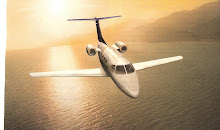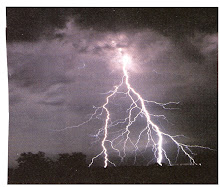Hi Readers: In flying, our radio and radar communications are all-important - a necessity from the beginning - to get from one point to another - from departure to arrival safely. This includes our use of radar navigation en route - some a convenience, others a necessity.
These radio and radar communications originate from a broad spectrum of frequencies (electromagnetic waves) broadcast and received by Transmitters and Receivers from a Low frequency (100 Khz) through MF, HF, VHF, UHF, SHF, and to EHF (Extremely High Frequency at 100 Ghz). If you've forgotten, Kilo is one thousand, Mega is one million, Gigga is one billion - and, of course, "Hertz" is the ICAO designation for cycles/second. These frequencies in the U.S. are assigned by the Federal Communication Commission (FCC) in collaboration with the International Civil Aviation Organization (ICAO).
In the very beginning, whether a local or X-C flight, we must necessarily contact a Ground Control, a Tower, or FSS to get departure instructions, and by regulation we must use the assigned frequencies. Normally, Towers and FSS's are assigned VHF frequencies (118+ Mhz). These frequencies can be found for any airport designated by the FAA. Ground Control frequencies are also in the VHF range, 121.66 to 121.9 Mhz.
En Route, we should expect to communicate with VORs and VORTACs (108-118 Mhz); or use GPS on 1215-1240 Mhz; or ARTC as assigned, perhaps NDB on 190-535 Khz; or LORAN C at 100 Khz; Mode S radar at 1030, 1090 Mhz; TCAS at 9660-1215 Mhz; and ARSR at 1215-1400 Mhz.
On Descent and Approach we'll use ILS Localizer on 108-112 Mhs (VHF) and Glideslope on 328.6 - 335.4 (UHF). And then back to the Tower and Ground Control frequencies. All of these communication frequencies have to be known and used, as needed, by the pilot. The emergency frequency is still 121.5 Mhz.
UNICOM (No Tower or FSS) uses CTAF (Common Traffic Advisory Frequencies) of 122.7-123.0 Mhz. Other communications frequencies designated by the FCC are air-to-air and private airports on 122.750 and 122.850 Mhz; air-to-air GA Helicopter communications on 123.025 Mhz; and Aviation Instruction, Glider, and Hot-Air Balloon operations in the 123.300 Mhz range.
Other Airborne frequency assignmentss are Microwave Landing Systems (MLS) used by DOT, DOD, and NASA are 5000-5150 Mhz, with DME at 960-1215 Mhz; Airborne Weather Navigation Radar at 9300-9500 Mhz; Airborne Radar Altimeter at 4200-4400 Mhz; and Precision Approach Radar (PAR) used by the Military at 9000-9200 Mhz.
Large Ship Radar at 2900-3100 Mhz and above; Amateur Radio (HAM) at 1800 Khz to 250 Ghz, and Space Communications at 2290-2300 Mhz are of interest to many users.
Surface frequencies of interest, also, are AM Radio 535-1700 Khz; FM Radio 88-108 Mhz; Short Wave Radio 5.9-26.1 Mhz; CB Radio 29.96-27.41 Mhz; Television 54-88 Mhz and 174-220 Mhz, depending on the Channel; Cordless Telephones 40 to 50 Mhz; and Cell Phones at 824-849 Mhz.
As the need for air travel and the increase of airplanes in the airspace appear, the lack of available radio frequencies may become a stumbling block in operations as early as 2005. The demand for assigned frequencies is getting beyond the supply. A log-term digital plan seems to be the best option for the future.
Thanks for listening. R.S.
Showing posts with label UNICOM. Show all posts
Showing posts with label UNICOM. Show all posts
Friday, December 28, 2007
Radio and Radar Communications
Labels:
air travel,
airspace,
communications,
CTAF,
FCC,
FSS,
GPS,
ICAO,
localizer,
Radar,
Radio,
tower operations,
UNICOM
Wednesday, September 5, 2007
CTAF and UNICOM
Hi readers: There has always been a certain amount of confusion regarding CTAF and UNICOM as to purpose, use, and where to find the information on both. Well, it has to do with in and out traffic and flight safety at and in the vicinity of airports operating without a control tower.
Why is this so important? It is essential that all pilots be aware of and communicate with other traffic when approaching, departing, and in the vicinity of an airport without a tower since all the aircraft may not have a communications ability. To achieve the highest degree of safety, all of the radio-equipped aircraft must transmit and receive on a common frequency for advisories. CTAF (Common Traffic Advisory Frequency) is the frequency that must be used for this purpose. The CTAF's for each airport are listed on aeronautical charts or in the FAA Airport Facility Directory or in other appropriate publications. The CTAF can be obtained by contacting any FSS (Flight Service Station), and you can communicate on a UNICOM frequency or a published CTAF.
What is UNICOM? UNICOM is a nongovernmental air/ground radio communications station which may provide airport information for public use airports where there is no tower or FSS. UNICOM stations provide pilots (on request) with weather information, wind direction, the recommended runway, and other necessary information. If the UNICOM frequency is designated as the CTAF, it will be be identified in the appropriate aeronautical publication.
If an airport has a tower and it is temporarily closed or operated on a part-time basis and there is no FSS on the airport or the FSS is closed, then the pilot must announce his position and intentions on the CTAF. Where there is no tower, FSS, or UNICOM station on the airport, a MULTICOM frequency of 122.9 is used for self-announce procedures. If there is no tower, but a FSS is open, you can communicate with the FSS on the CTAF. In retrospect, the CTAF may be a UNICOM, MULTICOM, FSS, or tower frequency, which all can be found in the aforementioned directory.
There are established, recommended traffic advisory practices in FAR, Chapter 4: Air Traffic Control, that pilots should note and use.
CTAF and UNICOM are very important, also, to all pilots in flight since an emergency can always occur and the need to communicate with an airport becomes very necessary.
Why is this so important? It is essential that all pilots be aware of and communicate with other traffic when approaching, departing, and in the vicinity of an airport without a tower since all the aircraft may not have a communications ability. To achieve the highest degree of safety, all of the radio-equipped aircraft must transmit and receive on a common frequency for advisories. CTAF (Common Traffic Advisory Frequency) is the frequency that must be used for this purpose. The CTAF's for each airport are listed on aeronautical charts or in the FAA Airport Facility Directory or in other appropriate publications. The CTAF can be obtained by contacting any FSS (Flight Service Station), and you can communicate on a UNICOM frequency or a published CTAF.
What is UNICOM? UNICOM is a nongovernmental air/ground radio communications station which may provide airport information for public use airports where there is no tower or FSS. UNICOM stations provide pilots (on request) with weather information, wind direction, the recommended runway, and other necessary information. If the UNICOM frequency is designated as the CTAF, it will be be identified in the appropriate aeronautical publication.
If an airport has a tower and it is temporarily closed or operated on a part-time basis and there is no FSS on the airport or the FSS is closed, then the pilot must announce his position and intentions on the CTAF. Where there is no tower, FSS, or UNICOM station on the airport, a MULTICOM frequency of 122.9 is used for self-announce procedures. If there is no tower, but a FSS is open, you can communicate with the FSS on the CTAF. In retrospect, the CTAF may be a UNICOM, MULTICOM, FSS, or tower frequency, which all can be found in the aforementioned directory.
There are established, recommended traffic advisory practices in FAR, Chapter 4: Air Traffic Control, that pilots should note and use.
CTAF and UNICOM are very important, also, to all pilots in flight since an emergency can always occur and the need to communicate with an airport becomes very necessary.
Labels:
air travel,
Airline pilots,
airlines,
airports,
Aviation careers,
cargo,
CTAF,
FARs,
flight safety,
flying hours,
forecasts,
frequency,
FSS,
no tower,
traffic delay,
UNICOM
Subscribe to:
Posts (Atom)










